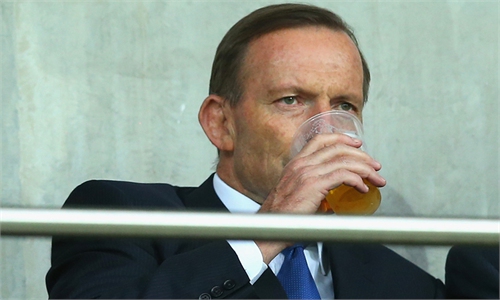
View of piles of coal on a quay in Rizhao, East China's Shandong Province Photo: cnsphoto
With the global power crunch raising alarms for the coming winter power consumption peak, the market is anticipating Wednesday's release of China's trade data for September for more clues as to whether the country will increase coal imports sharply in the coming months.Ever since several Western media outlets reported last week that an estimated 1 million tons of Australian coal were allowed by clear customs at Chinese ports, some believe that China may rely on coal imports to a certain extent to alleviate the power shortages that have spread to several provinces over the past weeks. Using this logic, there has even been speculation that China's coal shortage could bring the window of opportunity for easing a coal-focused trade dispute between China and Australia.
Yet, it should be made clear that while tight coal supplies is the main cause for China's current power shortage, the relatively slow growth of domestic supplies when demand for the main energy source surges due to the recovering economy is the real reason. Coal imports are not a major factor determining the overall picture of China's energy supply and demand relationship.
In 2020, China's coal production totaled at 3.84 billion tons, while its total coal imports were nearly 300 million tons. Although the country's coal output rose 4.4 percent year-on-year to 2.6 billion tons in the first eight months of this year, the growth rate was well below the 13.8 percent increase in total power consumption during the same period of time, according to data released by the National Bureau of Statistics.
Thus, as the world's largest producer and consumer of coal in the world, China can only ease the coal shortage problem by increasing its domestic production capacity. This is exactly what China has been engaged in to address the tightening coal-fired electricity supply.
According to an executive meeting of the State Council, China will allow coal-fired power prices to be raised by up to 20 percent from the benchmark level, in an effort to guarantee winter heat and electricity supply. Meanwhile, several coal-producing provinces have moved to boost coal output, with 72 coal mines in North China's Inner Mongolia Autonomous Region ordered to increase production capacity by 98.35 million tons.
Of course, there is no denying that a moderate increase in coal imports is also a sensible measure to fill the supply gap and could relieve the supply pressure to a certain extent. And judging from the current sources of coal imports, China's diversification efforts have paid off when it comes to coal imports.
In the first half of this year, Indonesia, Russia and Mongolia were the three largest sources of coal imports to China. In the first eight months of this year, China's coal imports from the US, South Africa, Canada, and the Philippines all recorded significant growth. In this sense, the coal trade friction between China and Australia didn't have much impact on China's coal imports.
Against this backdrop, Whether the alleged imports of Australian coal is true or not, it seems far-fetched to hope China's energy shortage to be a growth point for China-Australia trade.



